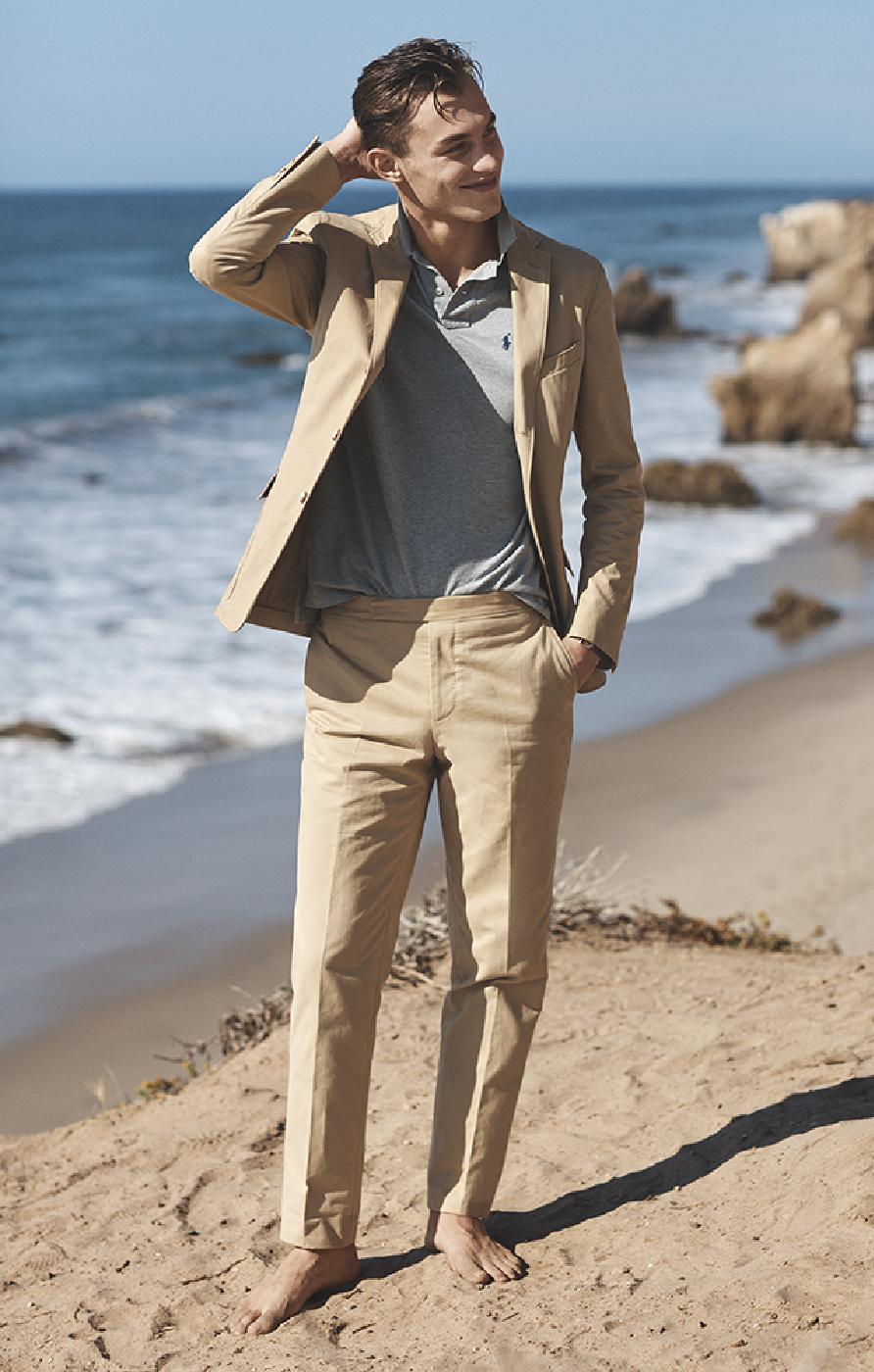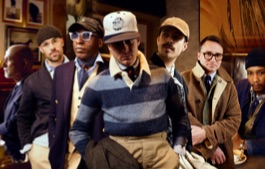
It’s an uncomfortable fact among peace-loving folks, but nearly every time a man gets dressed he’s effectively getting dressed for war. Countless components of the modern man’s wardrobe were developed for military use, from the battlefield fashions that evolved into the tuxedo you wore on your wedding day to trench, toggle, and peacoats—not to mention overtly military-inspired pieces like bomber jackets and combat boots. The very concept of tailored clothing bequeathed to us by Beau Brummell, the so-called father of modern costume, has its roots in Brummell’s modification of military coats for gentlemanly city dress.
And so it is with khaki, which stands alongside denim as the defining fabric of masculine American style. Whether worn by weekend warriors on the golf course, at the office with a navy blazer (another military-derived item, by the way), or relaxed and rolled up on the beach, as seen in the Spring 2017 Polo campaign, khaki is with us wherever we go. And its journey to the legs of modern men began more than 170 years ago.
Between 1850 and 1900, khaki-colored cotton or linen uniforms gradually became the standard for troops campaigning in South Africa, Afghanistan, and Sudan. In the United States, khaki uniforms were first worn in 1898 during the Spanish-American War and consisted of matching trousers and tunics.
But it was World War II that helped the modern khaki pant infiltrate civilian men’s wardrobes. When hostilities ceased in 1945, countless tons of military trousers were dumped onto the free market through Army and Navy surplus stores, which became a staple of virtually every town in America. And as veterans used their GI Bills to attend college, many wore their government-issue tan cotton pants. Subsequent undergrads soon realized that khakis were perfect for the devil-may-care college life. You could wear them to the lecture hall, to the quad for a game of touch football, and then—with a jacket and button-down—out for a date. Taking care, of course, to match the stripe of one’s tie to the grass stains on one’s khakis.
Period advertising in college newspapers shows that the pants were called a variety of terms, from khakis to chino slacks in military tan. The term chino is believed to take its name from a cotton twill originally from China that was also used for military garb. This accounts for the interchangeability, though technically chino refers to the fabric and khaki to the color.
Postwar, khakis were cut full and worn creased, but they grew slimmer and shorter through the 1960s (see the seminal document of 1960s prep, the Japanese book Take Ivy, for evidence of that), and by 1979, the popular “Are You a Preppie?” poster featured the fictitious Nathaniel Worthington III wearing flood-length khakis with all the right details. The preferred cut on campus had returned to baggy, and wrinkles were considered optional—but there was certainly no crease.
By this time, Ralph Lauren was making his own khakis, which channeled his love of collegiate style and a keen eye for military detail honed during a stint in the US Army, from 1962 to 1964. Decades later, Mr. Lauren was still enamored with the material. "I wear khaki,” he said in a 1987 interview. “I love army clothes.”
Whether worn Take Ivy style, with loafers and a button-down, or military style, as demonstrated by Mr. Lauren above, khaki may well be the most versatile hue a man can wear. These days the fit is slim, though volume—and even a subtle pleat—is, one might say, on the rise. However you wear yours, few things in a man’s wardrobe hold such charm, history, or versatility.- Courtesy of Ralph Lauren Corporation
- Illustration by AC Lovett
- Photograph by BJ Falk; Courtesy of Library of Congress
- Photograph by Teruyoshi Hayashida; courtesy of PowerHouse Books
- Still photograph from School Ties; Courtesy of Paramount Pictures Corporation







